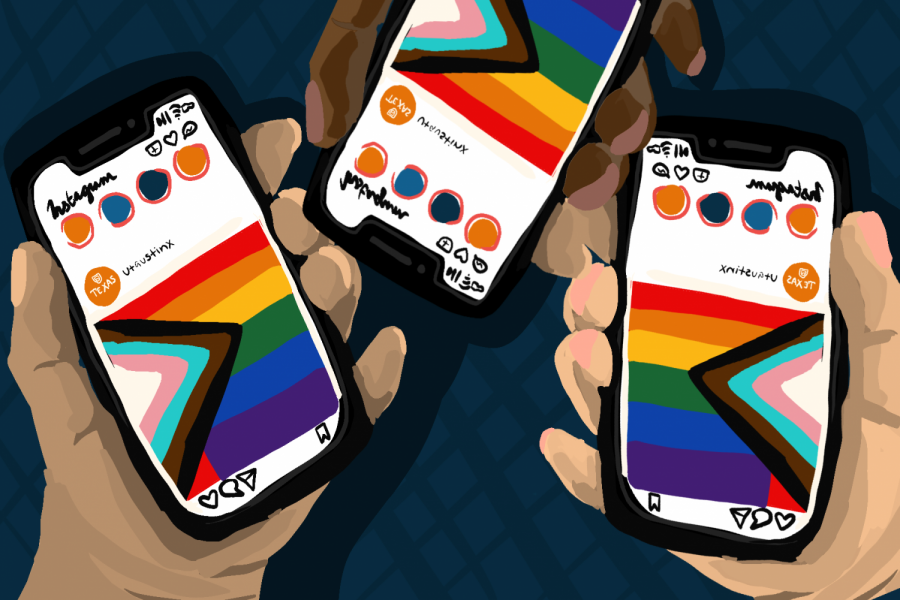UT, demonstrate allyship past Pride Month
June 21, 2021
One post. Out of the 70 posted on UT’s main Instagram page throughout the last academic school year, there was only one that involved LGBTQ+ content. Too often, the University fails to amplify and represent the voices of LGBTQ+ students on its social media platforms, which can make these students feel alienated.
In order for students in the LGBTQ+ community at UT to feel more valued and better understood, University Communications must demonstrate allyship on the University’s central social media platforms not only during Pride Month, but year-round.
Social media has become an integral part of the lives of many current, prospective and former UT students, who look to it as a way to stay connected to the latest University developments. While posting differs on various platforms, J. B. Bird, the director of media relations and newsroom for University Communications, explained that they all serve specific purposes.
“The (Social Media Council) maps out a cadence for the number of posts that they anticipate putting up and they focus on different audiences on different platforms,” Bird said. “We recognize that we see more alumni on Facebook, we see more current students and prospective students on Instagram, (and) we see a mixture of both on Twitter.”
While accounts run by student organizations and each of UT’s colleges do show support for LGBTQ+ students, no page comes close to the 154k followers that the main UT Instagram currently has or the 228.8k followers on Twitter. These widely followed social media platforms are the strongest media representations of UT, but have unfortunately made minimal effort to demonstrate allyship. UT’s Twitter account only recently became the first main University platform to make a remark about Pride Month, by retweeting a post from the Division of Diversity and Community Engagement over halfway through the month.
A near-absence of representative content on these pages have left some LGBTQ+ students wondering if UT is concerned with their inclusion on campus. Corinne Floyd, a Plan II honors and human development and family sciences sophomore, believes it was her own efforts and connections that made her feel comfortable on campus, not the University’s.
“I think that any kind of level of comfort that I have talking about my sexuality comes more from the student body and the environments that I have been able to cultivate on my own, rather than anything the University has done specifically,” Floyd said.
Those running UT’s social media accounts can utilize pre-existing initiatives, such as the graduating students series on Instagram that highlighted silenced voices, to showcase LGBTQ+ students and causes. Additionally, allyship can involve posting informative content regarding relevant issues, on-campus LGBTQ+ events and resources about important topics, such as respectful and intentional pronoun usage.
Taking the time to post more LGBTQ+ centered content celebrates the strides the University and its students have made in becoming more welcoming to the LGBTQ+ community, and helps to foster an inclusive environment.
“I think it is very fair to say that there is more consciousness, attention, explicit discussion and concern about the wellbeing of LGBTQ faculty, staff and students at UT than I’ve seen before … in the University leadership, and there’s a lot of stuff that we still need to do,” said Stephen Russell, director of the School of Human Ecology and co-chair of the President’s Advisory Committee on LGBTQIA+ Initiatives.
When it comes to supporting students through social media, UT Communications must ensure all voices are represented — and not just during times when performative advocacy is at its peak. Allyship is a year-round endeavor.
Krautkramer is a Plan II honors and undeclared business freshman from Grapevine, Texas.











